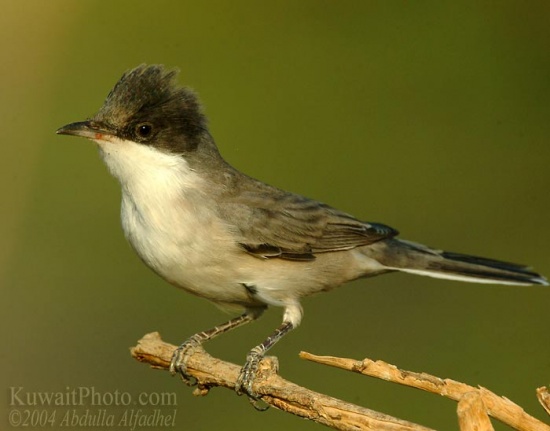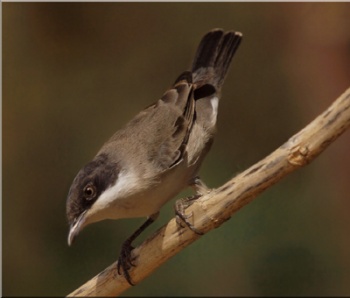- Curruca crassirostris
Sylvia crassirostris
Identification
- Long pointed bill
- Black legs
Adult males
- Plain grey back and whitish underparts
- dark grey head
- Black eye mask
- White throat
- Iris may be white but is dark in most individuals
Females and immatures
- Brownish-grey back
- Paler head and buff underparts
- Iris is dark in many if not most
Similar species
More varied song, pinker belly, and sometimes more strongly marked hood than the very similar Western Orphean Warbler.
Distribution
Breeds in the eastern Mediterranean (from Slovenia east) through the Balkan peninsula to Turkey, the Middle East, Turkmenistan, Iran, Pakistan to Tajikistan and Kyrgyzstan.
Taxonomy
This is a polytypic species[1] consisting of 3 subspecies.
This species was formerly lumped with Western Orphean Warbler to Orphean Warbler.
Subspecies
- C. c. crassirostris:
- C. c. balchanica:
- Iran, Turkmenistan and southern Transcaspia
- C. c. jerdoni
- Baluchistan to Pakistan. north to Tadzhikistan and Kyrgyzstan
Habitat
Open deciduous woodland.
Behaviour
A Migratory species.
Breeding
The nest is build in a tree or bush; the clutch consists of 4-6 eggs.
Diet
The diet consists mostly of insects.
References
- Clements, J. F., T. S. Schulenberg, M. J. Iliff, S. M. Billerman, T. A. Fredericks, J. A. Gerbracht, D. Lepage, B. L. Sullivan, and C. L. Wood. 2021. The eBird/Clements checklist of Birds of the World: v2021. Downloaded from https://www.birds.cornell.edu/clementschecklist/download/
- Birdforum thread discussing some aspects of id of Eastern Orphean Warbler
- Wikipedia
Recommended Citation
- BirdForum Opus contributors. (2024) Eastern Orphean Warbler. In: BirdForum, the forum for wild birds and birding. Retrieved 20 April 2024 from https://www.birdforum.net/opus/Eastern_Orphean_Warbler
External Links
Search by scientific name:
Search by common name:
GSearch checked for 2020 platform.





